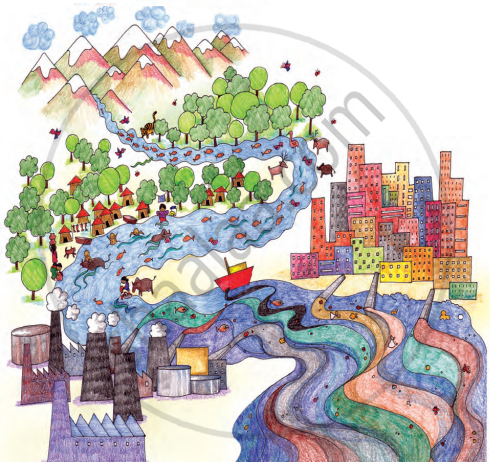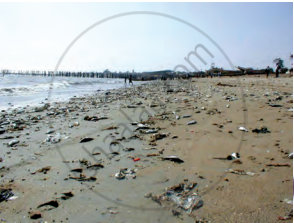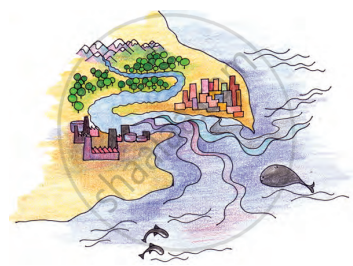Advertisements
Chapters
2: Ear to Ear
3: A Day with Nandu
4: The Story of Amrita
5: Anita and the Honeybees
6: Omana’s Journey
7: From the Window
8: Reaching Grandmother’s House
9: Changing Families
10: Hu Tu Tu, Hu Tu Tu
11: The Valley of Flowers
12: Changing Times
▶ 13: A River’s Tale
14: Basva’s Farm
15: From Market to Home
16: A Busy Month
17: Nandita in Mumbai
18: Too Much Water, Too Little Water
19: Abdul in the Garden
20: Eating Together
21: Food and Fun
22: The World in my Home
23: Pochampalli
24: Home and Abroad
25: Spicy Riddles
26: Defence Officer : Wahida
27: Chuskit Goes to School
![NCERT solutions for Environmental Studies - Looking Around [English] Class 4 chapter 13 - A River’s Tale NCERT solutions for Environmental Studies - Looking Around [English] Class 4 chapter 13 - A River’s Tale - Shaalaa.com](/images/environmental-studies-looking-around-english-class-4_6:ee4192f105d64896a9aea389b002fc4d.jpg)
Advertisements
Solutions for Chapter 13: A River’s Tale
Below listed, you can find solutions for Chapter 13 of CBSE NCERT for Environmental Studies - Looking Around [English] Class 4.
NCERT solutions for Environmental Studies - Looking Around [English] Class 4 13 A River’s Tale Exercise [Pages 106 - 109]

Look carefully at the picture of the river. Read the words given below.
Boat, flowing water, blue, fish, water-plants, river, foul smell, big ship, oil, river banks, factories, washing clothes, animals, other work, change, city.
Use these words to make a story. Give a title to your story also.

Look at the pictures and answer the following questions:
- What is the colour of the river where it begins?
- At some places, there are many fish in the river, at others there are only a few and at some places, there are dead fish. What could be the reason for this? Discuss.

- What can be seen in the river before it reaches the village?
- At which places did the colour of the water in the river change? Why did this happen? Discuss.

- Which of the places shown in the picture would you like to live in? Why?
- Would you like to change any of the things that you see in the picture? Why and how?
- Have you seen people throwing different things into rivers or water bodies?
- What could be done to keep rivers clean? Discuss.
- If you wanted to drink some water, from which part of the river would you like to drink? Why?
- In the last part of the picture, the river flows into the sea. Have you ever seen the sea? Where? In a movie, or somewhere else?

- Have you ever been near a river or sea? When?
- Show with your hands, how the waves in the sea move.
- Is the water from the sea drinkable? Why?
- Do you think that there would be changes taking place in a river, pond or stream at different times of the year? What kind of changes would these be? Discuss.
- Will there be the same amount of water in the ponds or rivers during the rainy season and in summer?
Is there a pond, river or lake near your town or city? Find out -
- Are there any changes in the water during summers, the rainy season and in winters?
- What are the different kinds of water animals found there?
- What kind of trees and plants grows around it?
- What are the kinds of birds that come there?
- Have you ever seen or read about floods? Where?
- What happens when there is a flood?
- Have you seen dirty water in a river or pond? Where?
- How would you know if the water is dirty? If the water looks clean, can you be sure that it is alright to drink that water? Discuss.
NCERT solutions for Environmental Studies - Looking Around [English] Class 4 13 A River’s Tale How does Water become Dirty? [Page 110]

- From where do you get your drinking water? A river or a lake?
- Do you think that like the river in the picture your river or lake can also be affected?
NCERT solutions for Environmental Studies - Looking Around [English] Class 4 13 A River’s Tale Try this [Page 110]
For this activity, you will need to bring certain things from your home. You will find most of these in the kitchen.
- 5 or 6 glasses or bottles.
- Salt, sugar, cooking soda, haldi, flour and dal (about half a teaspoon each).
- Lemon Juice, soap water, sherbet, oil (one spoonful each).
NCERT solutions for Environmental Studies - Looking Around [English] Class 4 13 A River’s Tale What will you do? [Pages 110 - 112]
Fill about half of each bottle or glass with water. Make sure that all have the same amount of water. Now, one by one put each of the things in the water. For example - haldi in the first glass, oil in the second glass, soda in the third glass until you have one thing in each glass. Mix each thing in the water and see what happens. Write your observations in the table.
What did you observe? Put (✓) mark in the right places.
| Things | Dissolved (mixed) in water | Did not dissolve in water | Colour of water changes | Colour of water does not change |
| Sugar | ||||
| Salt | ||||
| Lemon juice | ||||
| Haldi | ||||
| Soap water | ||||
| Flour | ||||
| Dal | ||||
| Sherbet | ||||
| Cooking soda | ||||
| Oil (Mustard, Til or any other) |
Now on the basis of your observations tell -
- Do all things dissolve in water?
- Does the colour of the water always change?
- Did oil dissolve in water?
How can you say whether it has dissolved or not?
Colour of the water may not change even after some things are dissolved in it. Would you say that these are absent in water?
Imagine how it would be if things like sugar, salt, lemon juice, sherbet, etc., could not dissolve in water?
Imagine how it would be if things like stones, chalk, plastic and garbage would dissolve in water?
There are many things that dissolve easily in water. Some of these can be very harmful to our bodies. Hence, it is important that we clean water before drinking it. One of the best ways to do this is to boil the water. If for some reason this cannot be done, can you think of some other ways to clean water?
How is drinking water cleaned in your house?
Find out the many different ways of cleaning water at home.
Draw pictures showing two ways of cleaning the water.
Solutions for 13: A River’s Tale
![NCERT solutions for Environmental Studies - Looking Around [English] Class 4 chapter 13 - A River’s Tale NCERT solutions for Environmental Studies - Looking Around [English] Class 4 chapter 13 - A River’s Tale - Shaalaa.com](/images/environmental-studies-looking-around-english-class-4_6:ee4192f105d64896a9aea389b002fc4d.jpg)
NCERT solutions for Environmental Studies - Looking Around [English] Class 4 chapter 13 - A River’s Tale
Shaalaa.com has the CBSE Mathematics Environmental Studies - Looking Around [English] Class 4 CBSE solutions in a manner that help students grasp basic concepts better and faster. The detailed, step-by-step solutions will help you understand the concepts better and clarify any confusion. NCERT solutions for Mathematics Environmental Studies - Looking Around [English] Class 4 CBSE 13 (A River’s Tale) include all questions with answers and detailed explanations. This will clear students' doubts about questions and improve their application skills while preparing for board exams.
Further, we at Shaalaa.com provide such solutions so students can prepare for written exams. NCERT textbook solutions can be a core help for self-study and provide excellent self-help guidance for students.
Concepts covered in Environmental Studies - Looking Around [English] Class 4 chapter 13 A River’s Tale are A River’s Tale.
Using NCERT Environmental Studies - Looking Around [English] Class 4 solutions A River’s Tale exercise by students is an easy way to prepare for the exams, as they involve solutions arranged chapter-wise and also page-wise. The questions involved in NCERT Solutions are essential questions that can be asked in the final exam. Maximum CBSE Environmental Studies - Looking Around [English] Class 4 students prefer NCERT Textbook Solutions to score more in exams.
Get the free view of Chapter 13, A River’s Tale Environmental Studies - Looking Around [English] Class 4 additional questions for Mathematics Environmental Studies - Looking Around [English] Class 4 CBSE, and you can use Shaalaa.com to keep it handy for your exam preparation.
